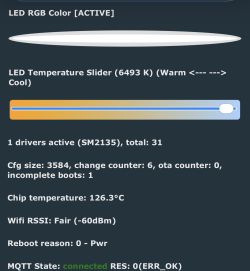You are given the power with all relays on, in this case 4.32 watts. You are probably supplying power from a 24 Vdc power supply.
4.32/24 = Current drawn = 0.18 [W/V=A] - that's not much....
In this device you have 4 analogue outputs (max 20 mA each) -> 0.08 A
The exposed analogue inputs can also lose a few mA when operating.
So the total power lost is the value you need to take into account for protection.
The nominal protection for this device is 8.6/24 = Current drawn = 0.358 [W/V=A].
The protection should have an excess of at least x 1.2 so 0.5 A should protect.... but it must have a delayed characteristic (higher current at start-up due to charging of the inverter capacitors inside the device or, in older designs, magnetisation of the core in transformers - which even delayed inserts could not withstand).
In addition, it is still necessary to verify in practice the data that the Manufacturer provides (power consumed and type of start-up), so it may turn out that the protection must be selected even x1.5 - 2.5 of the nominal current....
And in practice: Lord... 1 A and you'll be fine






